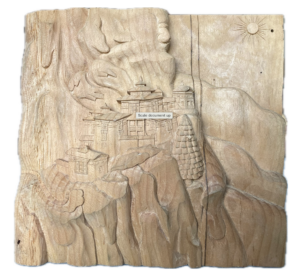
Image Source: Bhutanpeacefulcolour.com.
Perched dramatically on a sheer cliff 900 meters above the Paro valley floor, Paro Taktsang, commonly known as the Tiger’s Nest Monastery, is one of Bhutan’s most sacred and iconic religious sites. Located at an elevation of about 3,120 meters above sea level, the monastery is an architectural marvel that seamlessly blends with its rugged natural setting, symbolizing the spiritual depth and resilience of Bhutanese Buddhism.
Paro Taktsang dates back to the 8th century and is intrinsically linked to Guru Padmasambhava (Guru Rinpoche), the revered saint who introduced Vajrayana Buddhism to Bhutan. According to legend, Guru Rinpoche flew to this site from eastern Bhutan on the back of a tigress, believed to be the manifestation of his consort Yeshe Tsogyal, and meditated in a cave for three months to subdue local deities and spread Buddhist teachings. The site thus became known as Taktsang, meaning “Tiger’s Lair.”
The monastery complex was first constructed in 1692 by Tenzin Rabgye, the Fourth Druk Desi, to enshrine the sacred meditation caves and to honor Guru Rinpoche’s visit. Over the centuries, it has become one of Bhutan’s most important pilgrimage destinations and a symbol of national identity and faith.

Product 0075 showcases the depiction of Taktshang Monastery, carved on ‘Zhu’.

Our Timber Source is a remarkable piece with a rich history. It was originally utilized as a Zhu element in Pangrizampa Monastery and is believed to be around 200 years old. The age and significance of this timber element make it a valuable addition to any collection.

